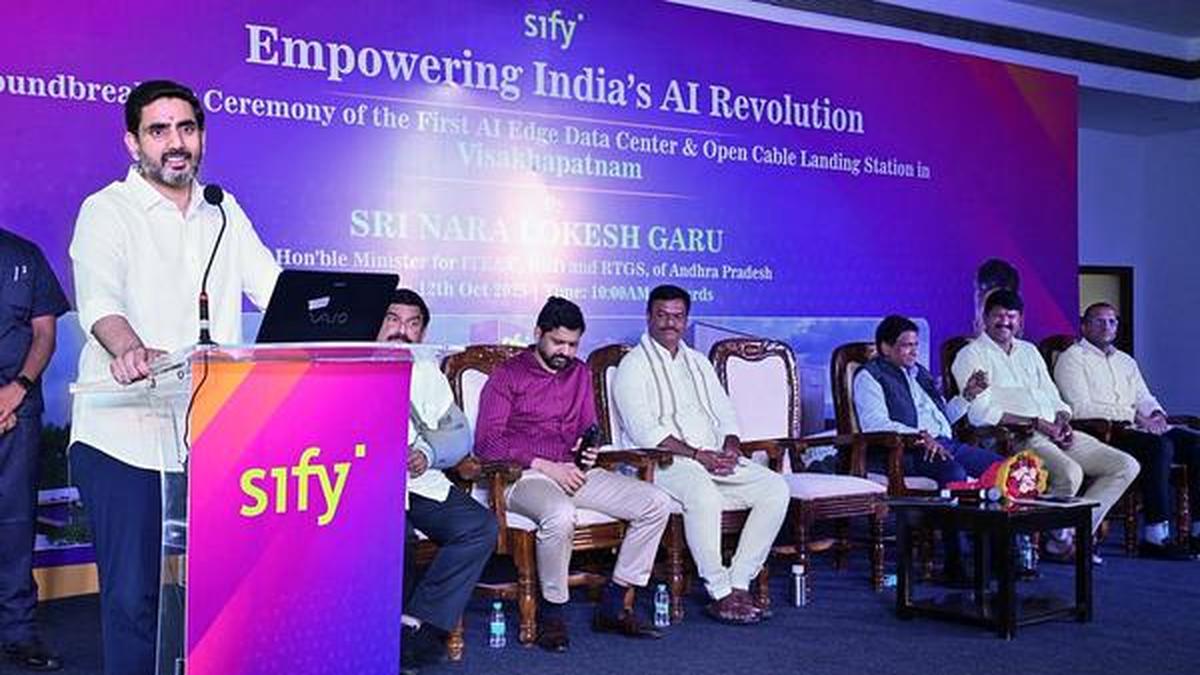Last Updated:October 13, 2025, 12:30 IST
The consultancy firm will need to provide a roadmap for scaling up to maximum feasible sizes of wind turbines (5 to 15 MW) in upcoming years.

The target is to assess the potential, challenges and economic viability of floating offshore windmills in India. (AI generated image)
After making strong gains in solar and onshore wind, India’s clean energy ambitions have long sought to harness the untapped potential of offshore wind energy. The Indian Institute of Technology (IIT), Madras has now invited online bids from consultancy services to conduct a techno-commercial feasibility study of floating wind farms across the country’s coastline.
The target is to assess the potential, challenges and economic viability of floating offshore windmills in India, marking a significant step towards advancing its renewable energy goals. As per the tender document, the consultancy firm will need to provide a roadmap for scaling up to maximum feasible sizes of turbines (5-15 MW class) in upcoming years.
While India had already notified National Offshore Wind Energy Policy in 2015, it does not have any active off-shore wind projects yet. Though preliminary studies across the Indian coastline and satellite data have helped identify eight zones each in Gujarat and Tamil Nadu as potential offshore zones for wind energy, no project has come up yet due to cost challenges.
Installing wind turbines in the sea is far more expensive than those on the land, and it comes with several logistic and technical challenges. The economic viability of such projects depends on several factors, such as water depth, grid connection cost, equipment, and installation cost, operation and maintenance cost, operation and maintenance expenses, wholesale electricity market revenues, as well as subsidies and financial costs. While international benchmarks exist, India still faces challenges in accurately modelling Levelized Cost of Energy (LCOE) due to the evolving nature of floating wind mills/turbines technology and local cost of variables.
As per the tender document, the consultancy firm will need to estimate the average cost to build and operate the project over its entire lifetime, relative to the total amount of energy it will produce. This has to be done taking into consideration India-specific factors such as water depth for different zones in India, wind resource availability, wind speed, readiness of supply chain in the field of offshore energy, major port infrastructure and cost of capital. This will also include a comparative analysis with international benchmarks.
The firm will need to consider the operational expenditure (OPEX), capital expenditure (CAPEX) for mill/turbine procurement, floating foundation costs, mooring and anchoring systems, subsea cables, port handling and installation. As per the document, the firm will have to quantify potential revenue from carbon credits, Renewable Energy Certificates (RECs), and international green financing mechanisms from offshore windmill projects as well.
“The firm should provide IIT Madras with a detailed output on how to scale up to the maximum feasible production of electricity, including the associated costs, while also protecting the expected electricity costs for future scenarios. It will align cost and financial models with IIT Madras’ floating platform design specifications, site assessments, and hydrodynamic models," it stated.
The last date for receipt of tender is October 28, and it will be opened on October 29, with only “Class – I & II" and “Non-Local suppliers" eligible to participate.
India has committed to producing 500 GW of non-fossil installed capacity by 2030 as part of its climate action goals. As of 30th March, India’s total installed electricity capacity stood at 474.21 GW, with renewable energy contributing 220.10 GW (46.32 per cent). But on June 30, India achieved that target of having 50 per cent of its cumulative electric power installed capacity from non-fossil fuel-based sources – five years ahead of its 2030 deadline. According to the latest Central Electricity Authority (CEA) data, the total capacity has now increased to 484.82 GW, of which 242.78 GW (over 50%) is non- fossil fuel-based.

Srishti Choudhary, Senior Assistant Editor at CNN-News18 specializes in science, environment, and climate change reporting. With over a decade of extensive field experience, she has brought incisive ground repo...Read More
Srishti Choudhary, Senior Assistant Editor at CNN-News18 specializes in science, environment, and climate change reporting. With over a decade of extensive field experience, she has brought incisive ground repo...
Read More
First Published:
October 13, 2025, 12:30 IST
News india IIT Madras Invites Bids For Cost-Feasibility Study On Floating Wind Farms In India
Disclaimer: Comments reflect users’ views, not News18’s. Please keep discussions respectful and constructive. Abusive, defamatory, or illegal comments will be removed. News18 may disable any comment at its discretion. By posting, you agree to our Terms of Use and Privacy Policy.
Read More
.png)
 18 hours ago
20
18 hours ago
20








 English (US) ·
English (US) ·